A Private View: two artists embrace their pirate spirit in a creative and storied home by the sea
Set in the centre of Lyme Regis – a town known for its fossils, thriving independent scene, and as the setting for John Fowles’ ‘The French Lieutenant’s Woman’ – Eagle House is surprisingly tranquil. Its current owners, Margaret and Ian, say “living here is like being in the countryside – you can hear the birds and not much else”. A balanced blend of architectural styles dating primarily to the 17th and 18th centuries, the house brims with period distinction. Margaret and Ian take Inigo through its transformation over the past 30 years, from an “unprepossessing” home doused in scarlet-red paint to a “fantastic machine for living in”
- Words
- Sophie Sims
- Photography
- Emily Bowden
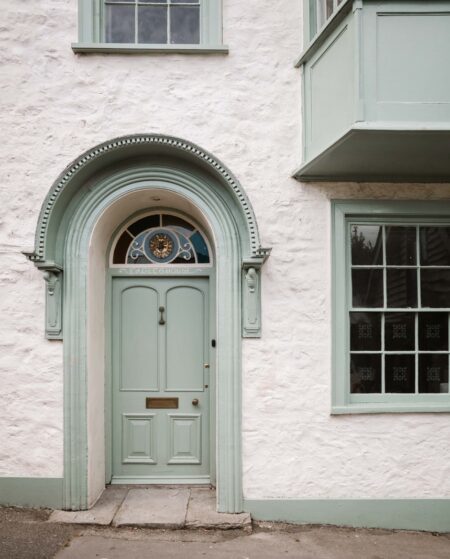
Margaret, Ian and I meet in the afternoon. That morning, Ian tells me he has been kayaking on Lyme Regis’s beautiful stretch of sea. It sounds nothing short of idyllic. “The house is a minute from the high street, 90 seconds from the supermarket, and three minutes from the beach,” he states.
It’s not the first time the pair has lived close to the water. “We were probably one of the first people to have a flat in London’s Docklands,” Ian states. “We met a now-famous developer who had just bought a warehouse, and the first occupied flat was ours, number 73, in New Concordia Wharf. Later, it won a prestigious architecture award.”
During their warehouse stint, Margaret and Ian rented a studio in nearby Rotherhithe. Now retired, the pair both had impressive careers in illustration. Ian, after an “unmeteoric” career in advertising, became a successful cartoonist, while Margaret, following her studies at the Royal College of Art, illustrated hundreds of children’s books, many of which have become household names. “We were artists, and we shared our studio with a textile designer. It was about 1984, and it was all pretty groovy,” she recalls.
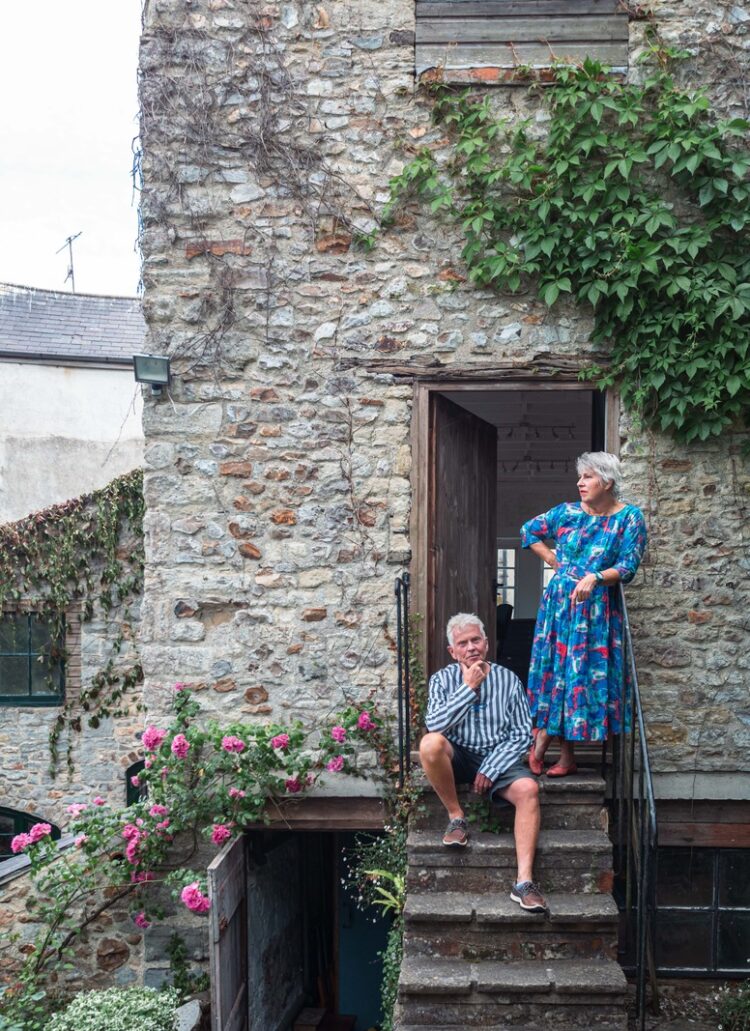
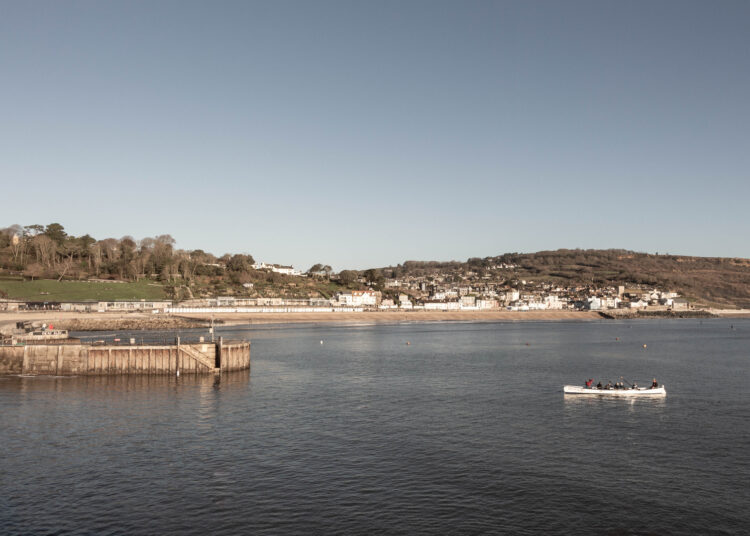
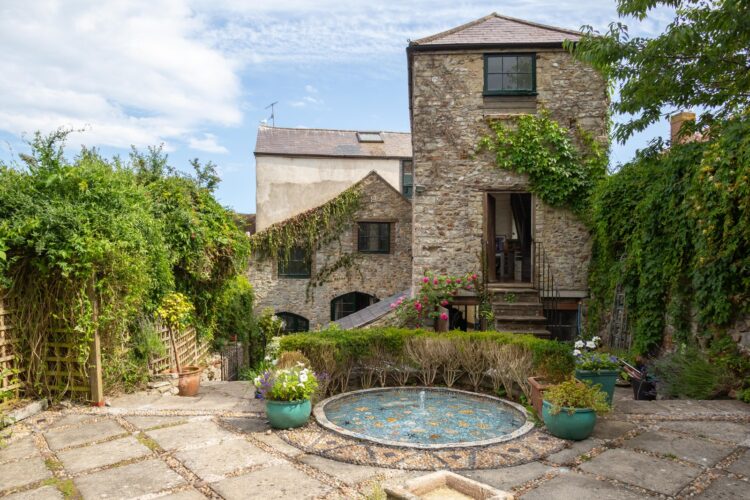
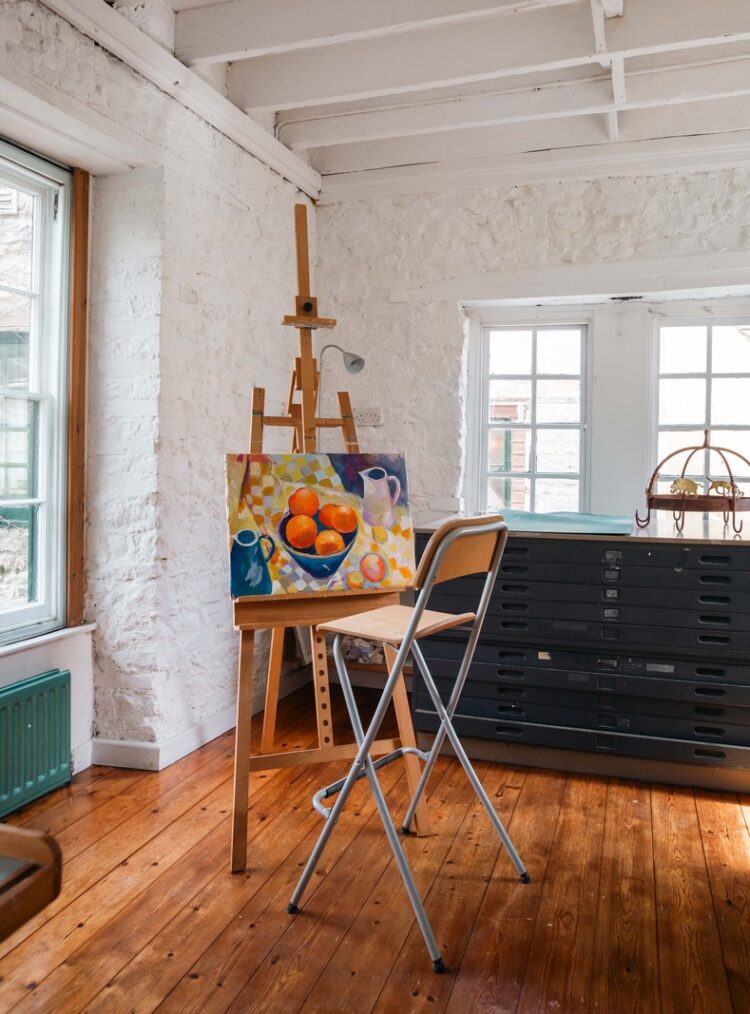
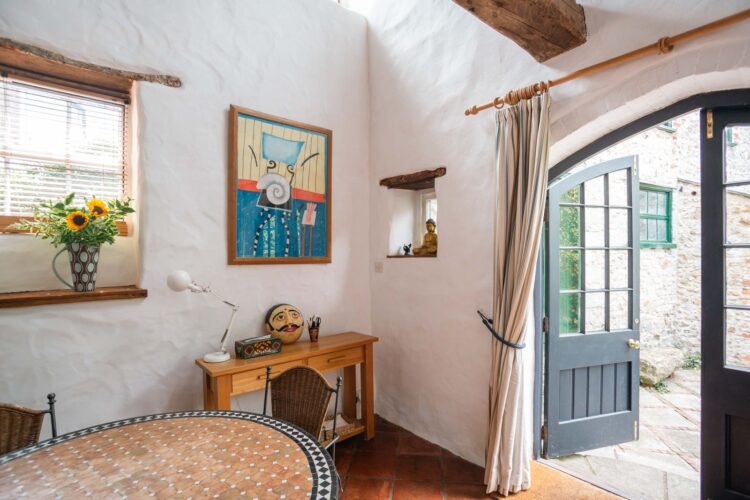
After London had lost its lustre for the couple, they moved to Bath. “We sold our warehouse flat and were able to move to a townhouse in Bath, in the Vineyards,” says Ian. “We haven’t got children, and sometimes I wonder, ‘What have I done with my time?’, and then I realise I’ve spent it all scraping wood and polishing and painting. I stripped panelling in the whole house; it took me months and months and months.”
Now in the South West, Lyme Regis has always been a special place to Ian, as this is where he spent his school years. A move to the coast made sense to him. Margaret, however, needed persuading. “I thought, I’ll only move to Lyme Regis if I can live in a house similar to mine. But one day, this home, which we’d known about for years as it was a former pancake house, came to the market. It needed a lot of work, but luckily we could see beyond that: it didn’t seem very prepossessing with its red-painted ceilings and walls. But we went out to the garden, and I thought, well, we just have to move here.
“I’d illustrated a book called The Man Whose Mother Was a Pirate when we lived in London. The story is about a pirate woman who is stuck in the city and longs to get back to the sea. So it’s this odyssey of going from town to the ocean. And I realised that it’s how we felt moving from London and Bath to Lyme Regis … I’m just like the pirate woman!”
Before its pancake-flipping days, Eagle House had lived many lives. It was built at the end of the Georgian period, and by the early 20th century had fallen into the hands of James Boswell, a cabinet maker. As was usual at the time, Boswell had begun making coffins; the business later progressed to undertaking, which was conducted in the workshops at the rear of the house.
In its later years, the business was run by Boswell’s twin sons, “an eccentric pair,” Ian says, “who never threw anything away … lots of the stuff they left went to museums, including the one that John Fowles curated in town … he’d been very interested in the house.” Despite its past, the pair have never come across any phantasmic figures. “There are no ghostly vibes at all, actually … but when you think about it rationally, would a ghost haunt their undertaker? They’d surely go and haunt, say, their mother-in-law instead,” Ian jests.
Eagle House, as it stands today, is the result of years of work by Margaret and Ian, along with around 10 skilled craftsmen. Regency from the front, the house was divided into two, with the left side used as storage (the Boswell twins had used this, in their time, as a store for lost property from Lyme Regis’s new railway station). The back of the house is older, “probably dating to the 17th century”, with reused oak lintels in the kitchen and the dining room – the remains of wattle-and-daub partitions that date back even further, possibly to the 15th century.
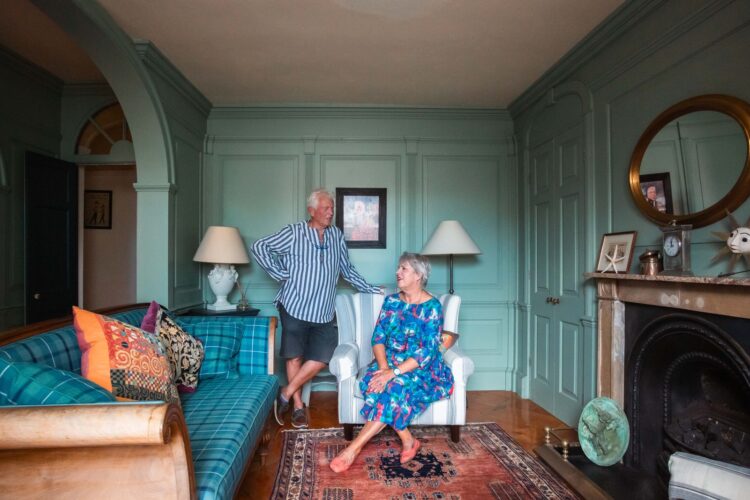
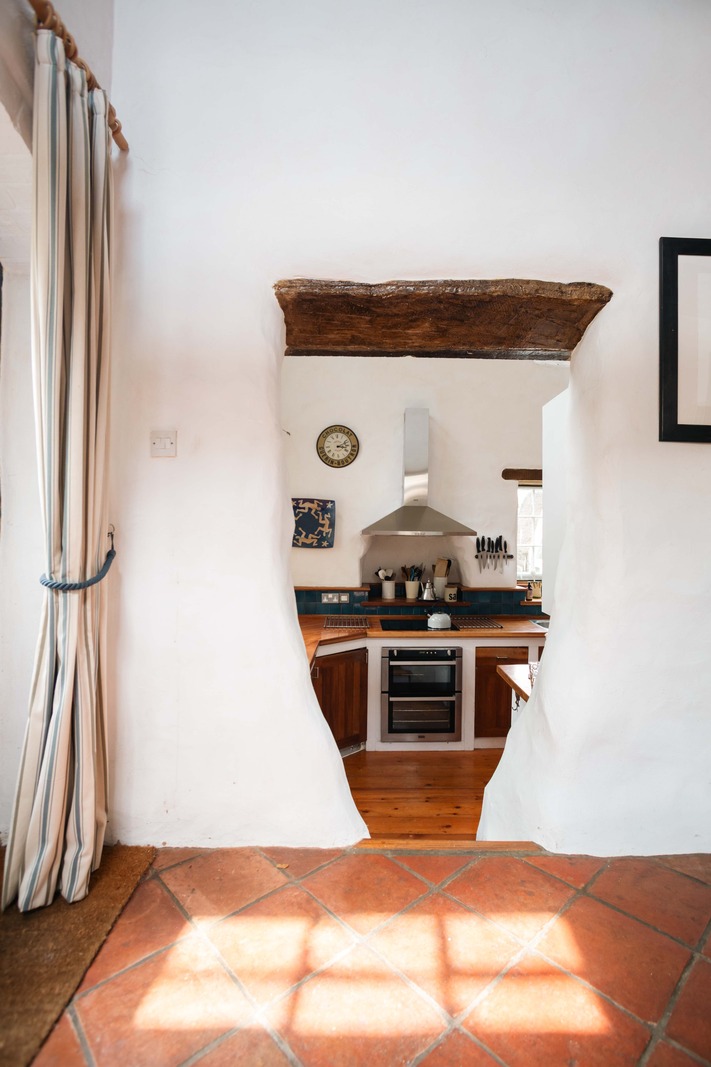
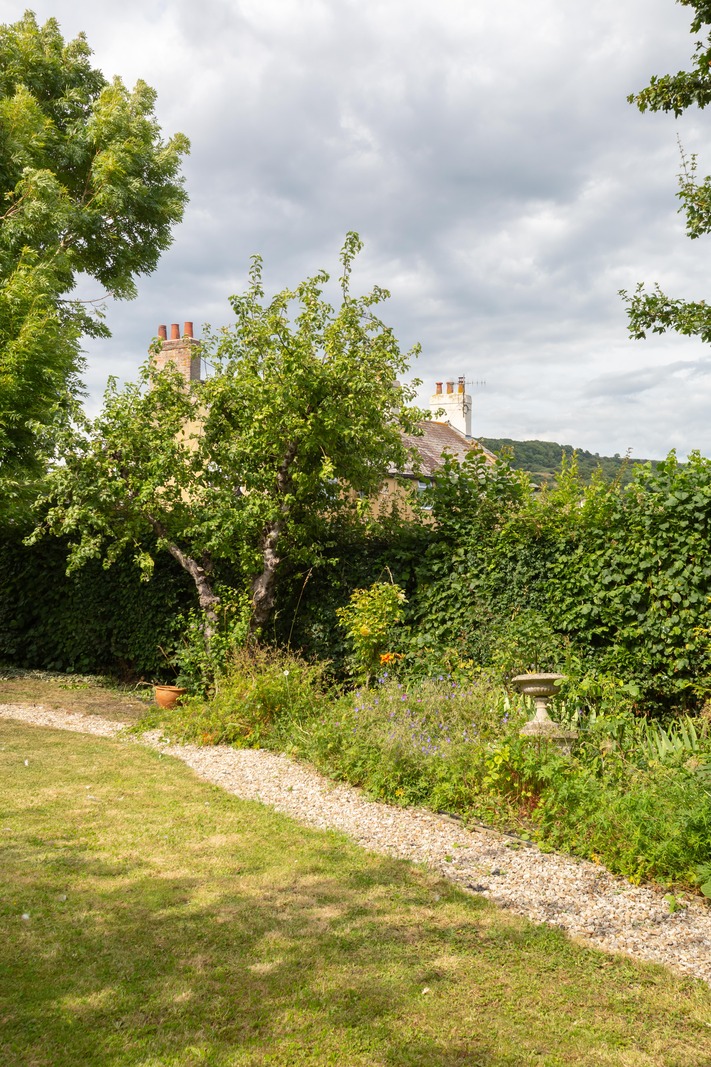
The pair are moving away from the coast, swapping sandy, fossil-strewn shores for a landscape of the more bucolic kind – a move that’s tinged with both excitement and sadness at having to leave their labour-of-love home.
They wistfully imagine what the future holds for Eagle House. “It’s spacious, but it’s no mausoleum,” Margaret says. “You can use the space theatrically. We’ve used the rooms as studios, sewing rooms, and even a t-shirt business. It has lots of potential.” Above all else, Ian and Margaret hope that the next dwellers will make the same discovery that they have, over the past three decades: that the home in their possession is, in fact, “much more than a house”.
Further reading
Follow Margaret on Instagram
Eagle House, Lyme Regis, Dorset
view listing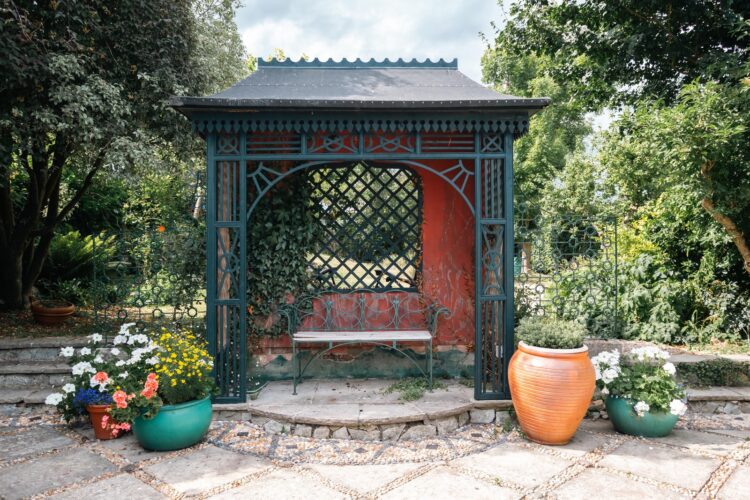
- A Room of One’s Own: the attic studio where painter Will Calver captures the poetry of everyday lifeA room of ones own / Interiors
- A Home with a History: an enchanting antique dealer’s shop and home, painted in nature's coloursHomes / Interiors
- A Room of One’s Own: the storybook hideaway of Tess and Alfred Newall’s bow-top wagonA room of ones own / Interiors
- A Private View: the storied medieval palace on the brink of a new beginning in rural KentHomes / Interiors
- A Home With a History: the Dartmoor cottage that sparked a pioneering ceramics studioHomes / Interiors

